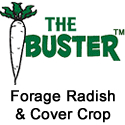Forages
Forage is plant material (mainly plant leaves and stems) eaten by grazing livestock. Forages are environmentally friendly in that they can reduce soil erosion, pesticide usage, and fertilizer application. In addition, forages can increase soil structure and organic matter and enhance agricultural profitability.
Forerunner™ Triticale | Magnum Oats™ | MXD Oats
Frostmaster Winter Peas | Magnus Peas | Forage Peas
Dundale Peas | Riley Tetraploid Annual Ryegrass
The Buster™ Radish | Turnips | Custom Blends Available
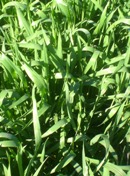 Forerunner™ Triticale
Forerunner™ Triticale
Forerunner™ Triticale is an awnless forage variety of triticale. It is an excellent choice for silage, hay or grazing. Forerunner™ can grow to 50-60 inches for forage purposes with good straw strength. Stems are soft and highly palatable. Lower leaves stay green and remain attached the full growing season. The leaves on Forerunner™ are broad and long, providing a very good leaf/stem ratio. Forerunner™ should be cut for silage ay heading stage for maximum nutritional value. In some areas, Forerunner™ can be double cut with proper management. Forerunner™ is resistant to current races of stem and leaf rust and being long season variety Forerunner™ has a wide window for harvest. Forerunner™ works well in both fall and early spring plantings. Forerunner™ Triticale is a PVP variety.
Back to Top
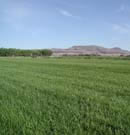 Magnum Oats™
Magnum Oats™
Magnum Oats are a very high yielding forage oat, often out yielding other forage oats by as much as 2 tons/acre. Magnum Oats stool out well and grow extremely tall, up to 7 ft., and have a very wide dark green leaf. Magnum Oats are a smaller seeded variety thus enabling reduced seeding rates of 70-80 lbs/acre versus 100-120 lbs/acre for many other forage oats. We look forward to the release of the next generation of Magnum oats :Magnum Plus” is available. Magnum is a PVP variety.
Back to Top
 MXD Oats
MXD Oats
Very tall forage oat, used for grazing, hay, and silage. Large kernel with very heavy bushel weight. Dark green in color.
Back to Top
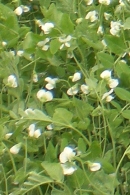 FrostMaster Winter Peas
FrostMaster Winter Peas
FrostMaster Winter Peas are long vined winter forage type pea. FrostMaster peas have strong plant growth and good winter hardiness. FrostMaster peas are a white flowered pea, thus have very low levels of tannins, which in turn gives them their “sweet” taste, making them highly palatable compared to other forage peas and Austrian Winter Peas. FrostMaster peas work both fall plant or spring plant.
Back to Top
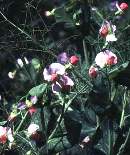 Magnus Peas
Magnus Peas
Can grow to 5′ on strong soils. Grows strong stems for supporting other vining cover crop plants. Good source of organic matter in mild winter areas. Seed at 80-120 lb/acre or 3-5 lb/1000 sq ft.
Back to Top
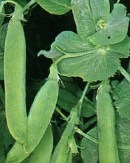 Forage Peas
Forage Peas
Forage peas are a valuable source of forage protein. They are highly palatable with good digestibility. Peas are a suitable grazing alternative in the late summer when grass is in short supply. Forage peas are often used in Europe and other temperate areas such as north-central US to increase forage yield and/or improve the nutritional quality of the forage. They can also be grown at higher altitudes in the tropics and as a cool-season winter crop in some regions where maize or soybeans would be the summer crop. They are an excellent choice for the organic farmer looking to supply a bulky, protein-rich forage for their livestock.
Back to Top
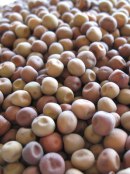 Dundale Peas
Dundale Peas
An Australian landrace pea ‘Dundale’, is said to have a high success rate not only there, but in the High Plains of eastern Wyoming and western Nebraska where conditions can be extreme. This makes this pea one tough customer in your garden and easy for the beginner. Dundale is drought tolerant and highly adaptable to a wide range of soils. This pea is an amazing nitrogen fixer in your soil. Want to improve your soil without harmful petroleum fertilizers this is the way to do it!
Back to Top
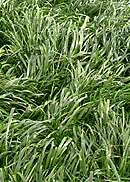 Riley Tetraploid Annual Ryegrass
Riley Tetraploid Annual Ryegrass
Use is similar to Oregon Annual Ryegrass, but this variety has better regrowth when cut or grazed. Grows to 3′. Plant at 25-50 lb/acre or 0.5-2 lb/1000 sq ft.
Tetraploid ryegrasses are a common feature in today’s ryegrass market. Worldwide the use of them in short term grasses is extensive and there is a growing trend the perennial ryegrasses market.
Back to Top
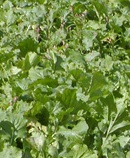 Forage Turnips
Forage Turnips
Turnip leaves have very high energy and low fiber. Protein content is determined mostly by nitrogen fertility.
For extended grazing, plant in early to mid-summer (depending on climate). For summer grazing, plant in the spring after soil warms to 50F.
Back to Top
Custom Blends also available

